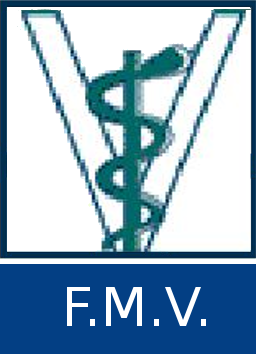L'ADN à la conquête du ragondin
Dor, Amelyne 
Promoteur(s) :
Farnir, Frederic 
Date de soutenance : 27-jui-2022 • URL permanente : http://hdl.handle.net/2268.2/14986
Détails
| Titre : | L'ADN à la conquête du ragondin |
| Titre traduit : | [en] DNA to conquer nutria |
| Auteur : | Dor, Amelyne 
|
| Date de soutenance : | 27-jui-2022 |
| Promoteur(s) : | Farnir, Frederic 
|
| Membre(s) du jury : | Georges, Michel 
Charlier, Carole 
Druet, Tom 
|
| Langue : | Français |
| Nombre de pages : | 66 |
| Discipline(s) : | Sciences du vivant > Médecine vétérinaire & santé animale |
| Institution(s) : | Université de Liège, Liège, Belgique |
| Diplôme : | Master en médecine vétérinaire |
| Faculté : | Mémoires de la Faculté de Médecine Vétérinaire |
Résumé
[fr] Au terme d’une campagne de piégeage ayant débuté durant l’hiver 2020-2021, 277 ragondins ont été capturés au Luxembourg et dans les pays limitrophes afin d’en extraire l’ADN et de les génotyper pour 19 marqueurs microsatellites.
Une analyse de la structure génétique, via le logiciel STRUCTURE principalement, supporte la présence de 5 populations distinctes au sein de notre échantillon. Deux autres logiciels (GENELAND et BAPS) confirment également cette séparation en 5 populations (p>0,99).
L’analyse du degré d’appartenance des ragondins luxembourgeois à chaque cluster montre que ceux-ci ne proviennent pas de nouvelles introductions. Au contraire, ils sont le fruit de mélange de différentes populations de ragondins (« genetic admixture ») , localisées essentiellement dans l’Est de la France. On peut suspecter que la Moselle agisse comme vecteur de dispersion pour ces mammifères aquatiques.
Par ailleurs, l’étude de la diversité génétique inter et intra populations montre une différenciation modérée entre populations (FST global : 0,120308 (p-value : 0.0001)) et une consanguinité proche de 8% (FIS : 0,07465) dans toutes les populations, à l’exception de la population localisée en Allemagne (FIS : - 0,02675).
La gestion des populations de ragondins présentes en France dans le Grand Est constitue donc un point important dans la gestion à long terme des ragondins luxembourgeois.
[en] At the end of a trapping campaign that started during the winter of 2020-2021, 277 nutrias were captured in Luxembourg and neighbouring countries in order to extract their DNA and genotype them for 19 microsatellite markers.
An analysis of the genetic structure, mainly using the STRUCTURE software, supports the presence of 5 distinct populations within our sample. Two other softwares (GENELAND and BAPS) also confirm this separation into 5 populations (p-value > 0.99).
The analysis of the degree to which the Luxembourgish nutrias belong to each cluster shows that they do not come from new introductions. On the contrary, they are the result of genetic admixture from different populations of nutrias, essentially in eastern France. We can suspect that the Moselle acts as a dispersal vector for these aquatic mammals.
Furthermore, the study of inter and intra population genetic diversity shows a moderate differentiation between populations (global FST : 0.120308 (p-value : 0.0001)) and an inbreeding close to 8% (FIS : 0.07465) in all populations, except for the population located in Germany (FIS : - 0.02675)
The management of nutrias which come from the Eastern of France is therefore an important point in order to successfully manage Luxembourgish nutrias.
Fichier(s)
Document(s)

 DOR_Amelyne_TFE_FMV_juin2022_provisoire.pdf
DOR_Amelyne_TFE_FMV_juin2022_provisoire.pdf
Description:
Taille: 1.92 MB
Format: Adobe PDF

 DOR_Amelyne_TFE_FMV_juin2022_définitif.pdf
DOR_Amelyne_TFE_FMV_juin2022_définitif.pdf
Description:
Taille: 1.81 MB
Format: Adobe PDF
Citer ce mémoire
L'Université de Liège ne garantit pas la qualité scientifique de ces travaux d'étudiants ni l'exactitude de l'ensemble des informations qu'ils contiennent.


 Master Thesis Online
Master Thesis Online




